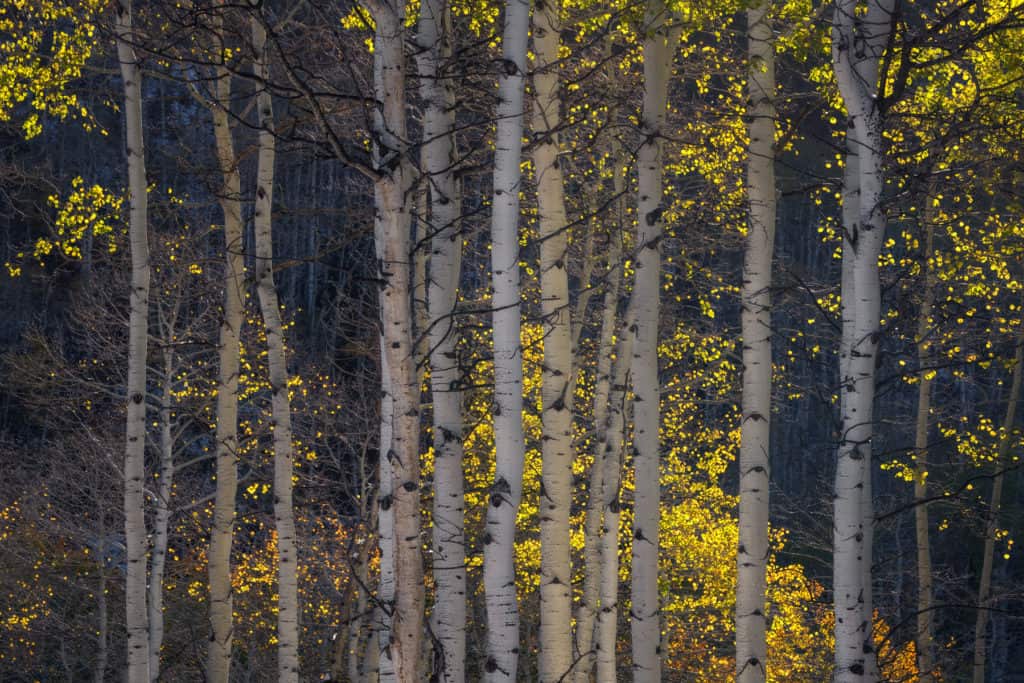The fall season is the time of year I feel the most inspired to photograph. Over the last decade I have made special trips to beautiful destinations like Colorado, Patagonia, Iceland, and Southern Utah in order to photograph different trees adorned in vibrant colors backdropped by scenic landscapes. But I also make sure I set aside some time each fall to enjoy the canyons near my home during the short window that the leaves change around here.
I feel very fortunate to live just about fifteen minutes away from a vast and remarkable aspen forest located in the Wasatch Mountains that border the Salt Lake Valley here in Utah, which is designated as the Uinta National Forest. By no means are these forests iconic: there are no obvious compositions that people flock here to recreate like in other areas of Utah. Some of the more accessible areas do get very crowded on warm, sunny days, as portrait photographers bring clients to photograph families, engagements, and senior portraits in front of colorful backdrops, but whenever there is inclement weather, it keeps these people away and I have the area(s) mostly to myself. As the years go by I have come to love and appreciate them more and more, and many of my favorite fall images in my portfolio have been created in these forests that I call home.

Many of my most memorable days as a photographer have been spent driving around these mountain canyon roads and getting out at pull-offs and trails to explore different sections of these dense aspen forests on foot. During the short span from when the leaves change color until they fall to the floor, I spend most days getting up before sunrise to head up the canyon, where I will wander around and admire the scenery, and perhaps pull out my camera to try and take a photograph of something. Then I will head back home, drink some warm coffee, and figure out another area to explore in the evening when the light gets soft again. On cloudy days I will completely lose track of time, spending hours and hours walking through these groves of aspen trees, looking all around me and making photographs of all sorts of things that excite me in the soft, diffused light that brings out their vibrant colors.
Because I visit the same groves of trees each year, I have learned to see them in different ways as I have become more familiar with them. The main reason I have come to love photography is not because of the medium itself, but because through photographing things in nature that excite me and draw my attention, I have learned to take a closer look and study my surroundings more mindfully. Occasionally I will visit the same place over and over again, thinking nothing of it; then on the twentieth visit I will have an epiphany–or satori–and see it with new eyes. Years ago, what I loved most was to visit new places that I had not been to before. Now, I get the most meaning out of seeing familiar places in new ways, as it is a clear sign that my relationship with a place has deepened.
One of these places was a small, unassuming aspen grove–smaller than a football field–right off the side of the road. Over the last decade I have stopped at this turnout many times, because it is a convenient, safe place to park and let those in a hurry pass along this scenic drive. After several years, I began looking at the grove to see if there was anything I could make photographs of, but nothing stood out to me. I would visit this place again and again while driving along this mountain road, but I never saw anything in it that made me want to pull out my camera. Finally, a couple years ago, on a cloudy day with nice, soft lighting, I pulled over at this spot and recognized the scene you see below.

After photographing this scene, I took a closer look at these trees and saw that the stark white aspen trunks looked great in front of the warm backdrop of autumn leaves.
Afterwards, I continued shooting as I usually do, seeing if there was any other way I could compose this stand of trees, but I didn’t come up with anything else that I was thrilled about. The next day an intense winter storm blasted through the rocky mountains and blew off all of the leaves. It was time to head south to photograph the rest of the fall season in the canyonlands.
The following year, as soon as I could see the aspens changing at higher elevations, I headed back up to the mountains with this spot in mind. It was still a little early in most places, but I found these same trees covered in totally different colors, showing a beautiful range from green to red. It was a remarkable scene that I could not help but photograph.
I waited for a week so the color could have time to change before I headed back up to this forest. I drove through the canyon road from the other side and arrived to this same grove just after the sun had set and snow was beginning to fall. I found the trees slightly more bare, adorned with beautiful red, orange, and yellow leaves. The snow that was engulfing them created a beautiful atmosphere and a painterly texture. These two photographs were made that evening in the faint, cool glow of twilight.

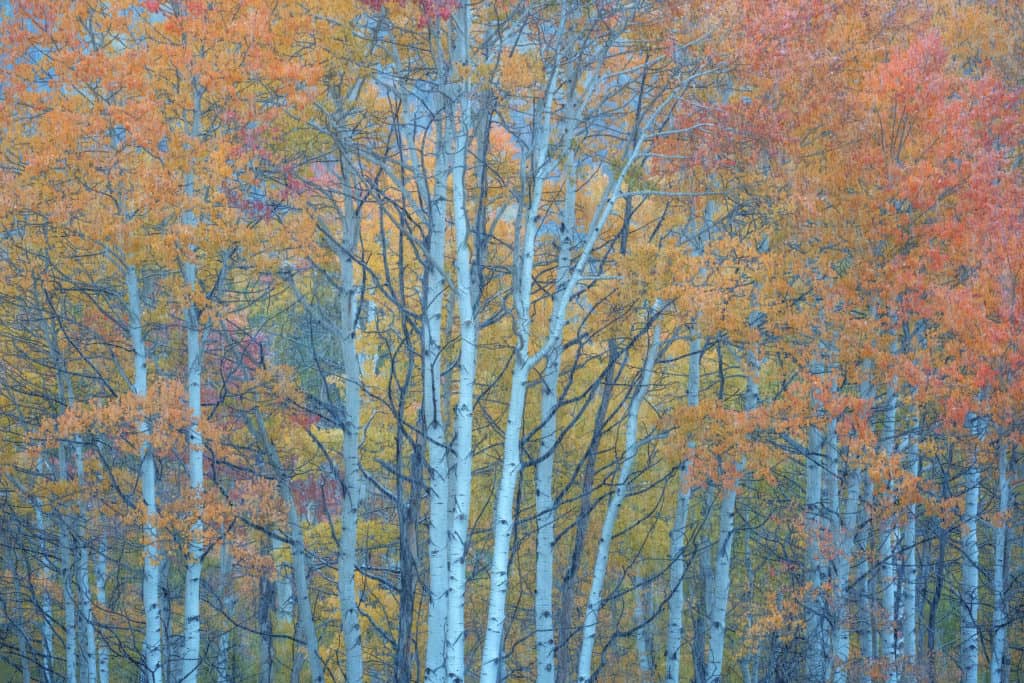
I waited a couple of days for the storm to let up, and returned to this grove of trees in the morning before sunrise, knowing it would be covered in fresh snow. I was ecstatic to find the entire forest floor was now buried in a deep layer of pristine snow and covered with colorful aspen leaves. The next 6 hours flew by as I wandered around this small area in a lucid trance, photographing everything that called my attention as the light changed. As a nature photographer, this was about as good as it gets.
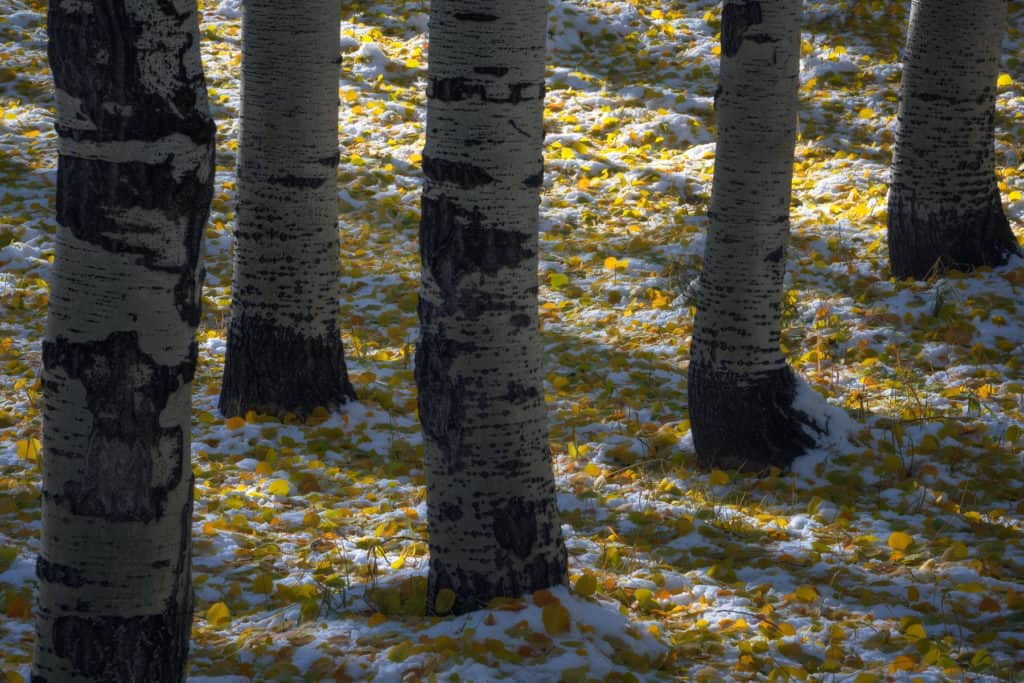
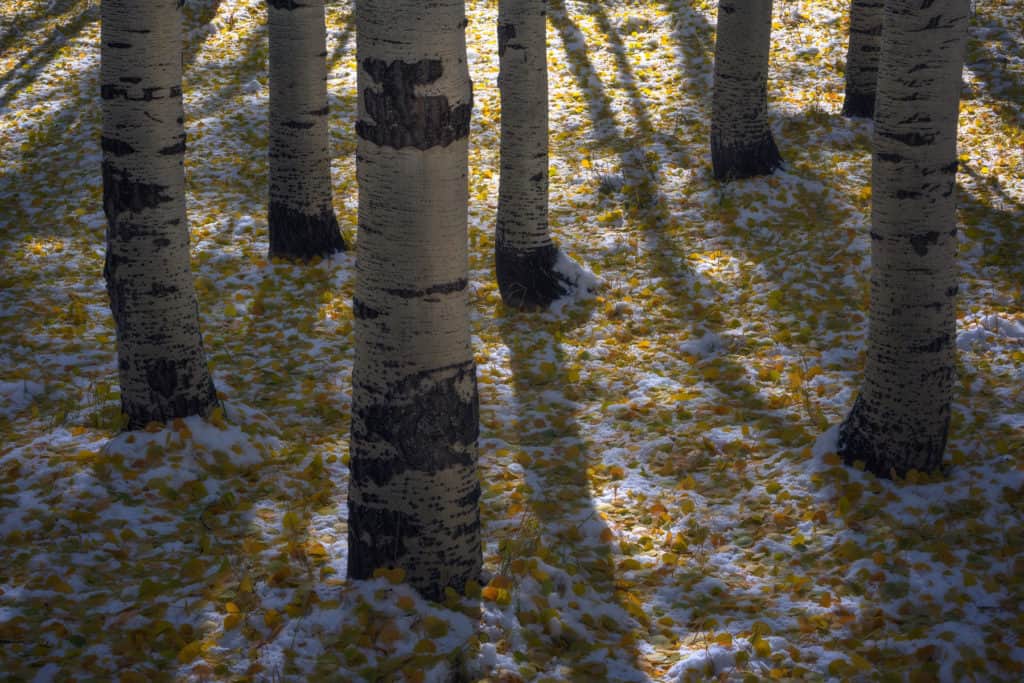

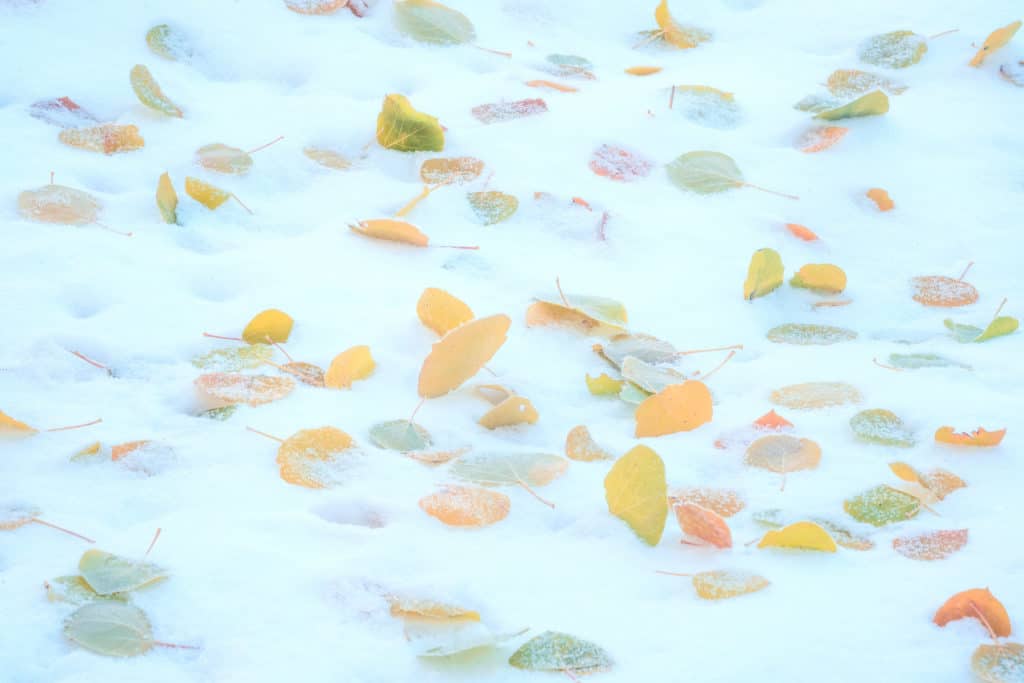
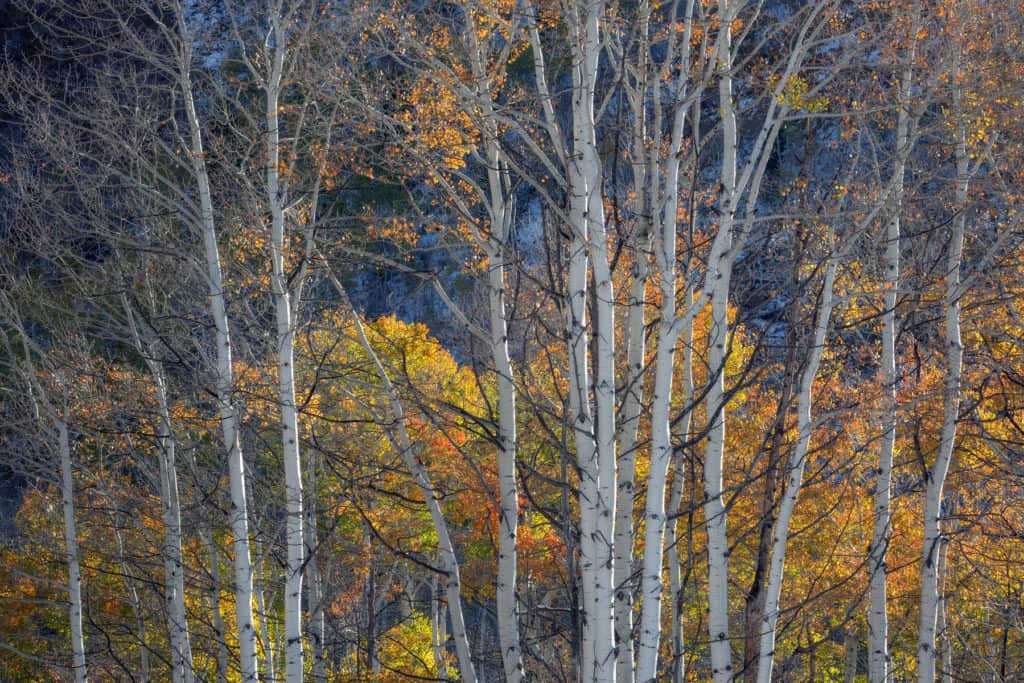
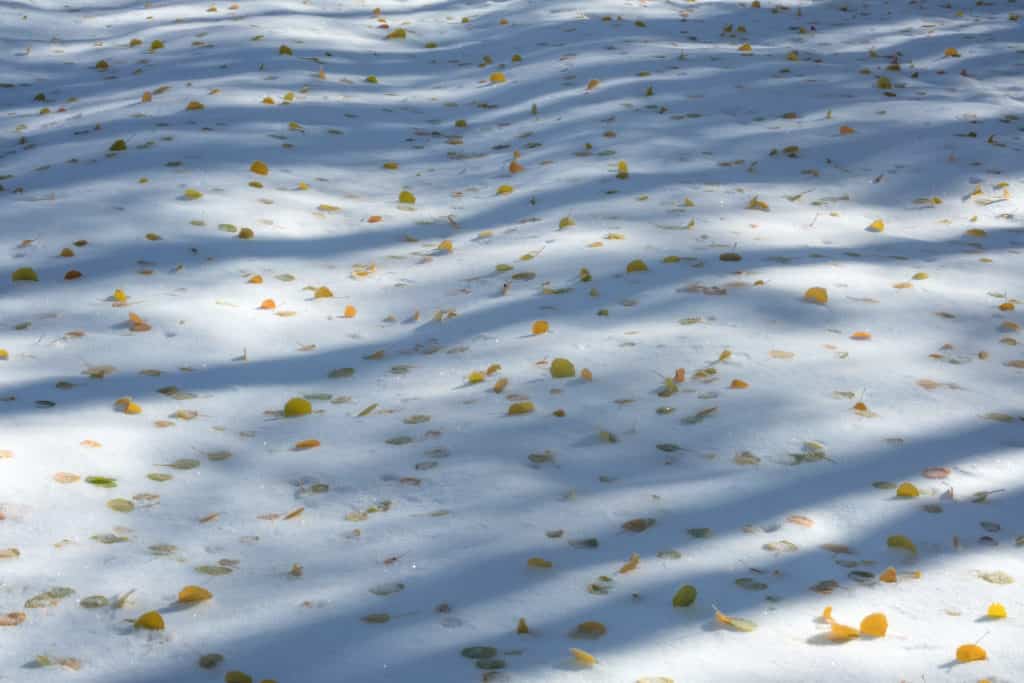
There was enough subject matter to continue making photographs all day long, but I decided I should head home to rest and recharge, since my mind was now exhausted from my prolonged, intense focus as I composed the many scenes around me. After having such a good time, the next morning I decided to head back to see what else I could find in this same grove of trees. It was a clear day and all of the snow had now melted, but it was still early and the sun had not yet risen. I photographed the trees that were still covered in plenty of vibrant leaves in the soft, predawn light.
Afterwards, while I waited for the sun to come up, I wandered into the tree-line to get my blood flowing and found this scene of frosty grass and leaves, as well as a nice group of aspens that felt unique from the rest of the images I had made of this area.
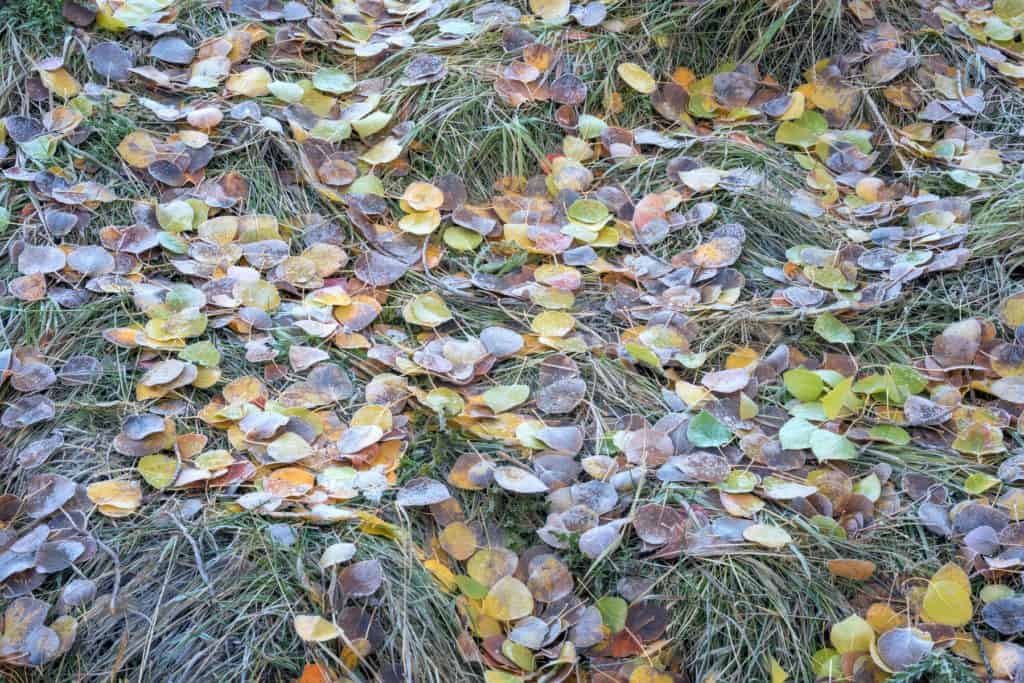
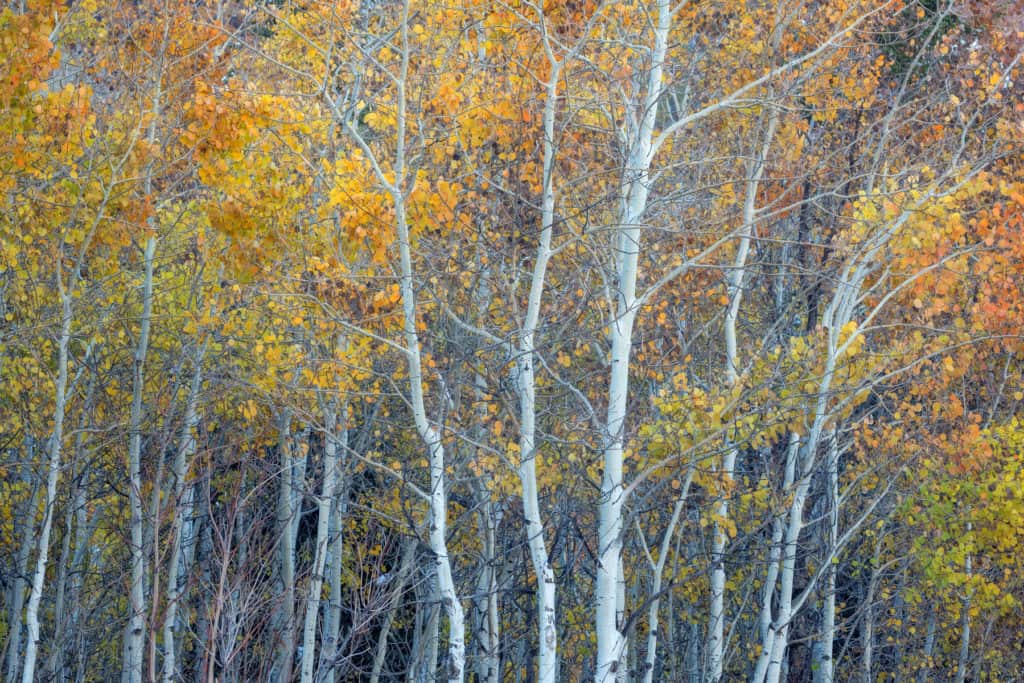
Once the sun rose, the rest of the grove was illuminated by intense backlight, which simplified the busier sections of aspens by shading the background and caused their leaves to glow like fireflies.
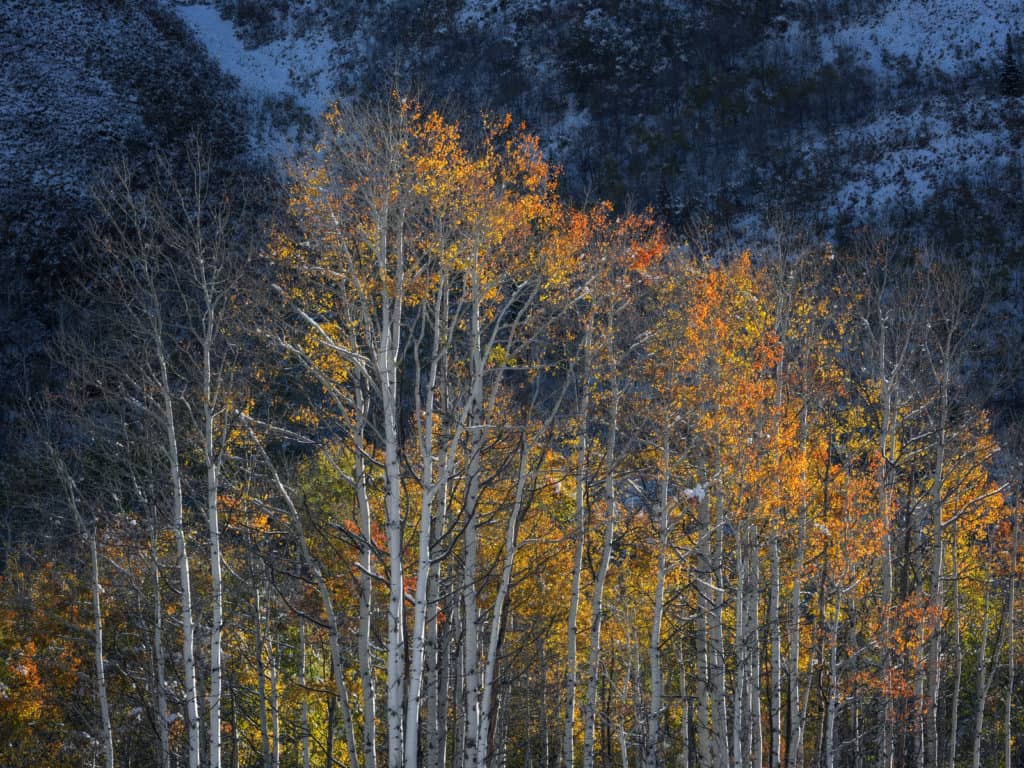
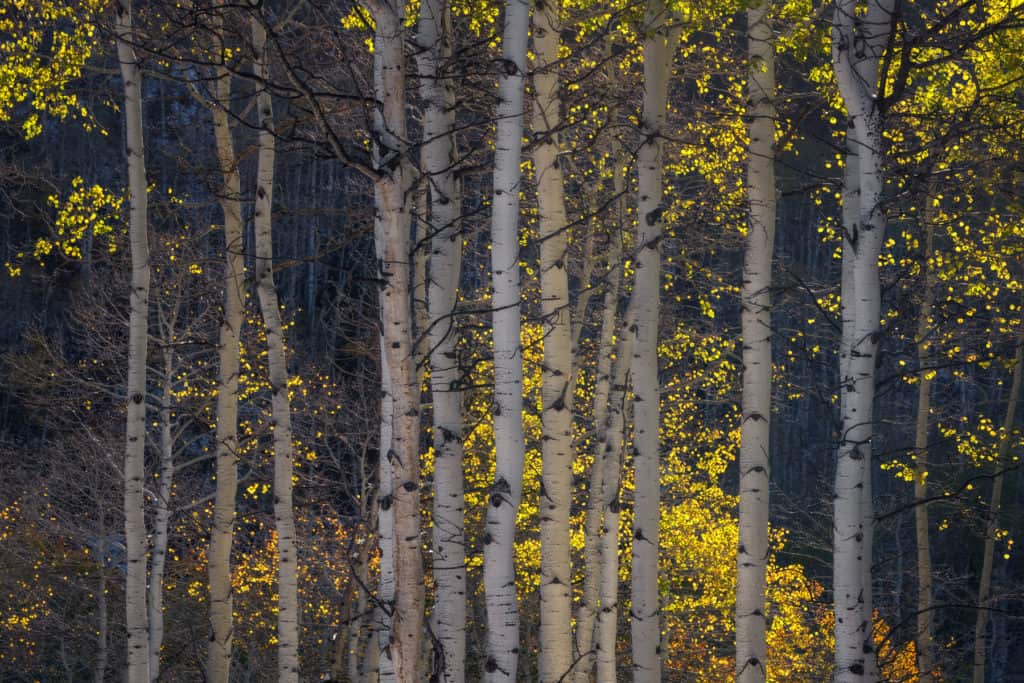
If it wasn’t for a private workshop I had to give in Southern Utah, I would have kept going back to this place each day for the rest of the season. By the time I came back home, the road was closed for the winter and most of the leaves were gone. I began processing some of the images and reminisced about the great experiences I had had while enjoying the company of these special trees. Several months later, in the middle of winter and after welcoming the new year, a storm finally came through and covered the mountains with fresh snow. So I decided to hike up the lonely, snow covered road on foot to visit these trees one last time.
By now they were completely bare, and their thin white branches were coated in a delicate layer of snowflakes. The snow continued to fall and at one point engulfed them entirely. The temperatures were in the single digits (Fahrenheit) and my fingers could hardly bear it, as I had forgotten my gloves and my wireless shutter release remote. Still, I managed to compose, focus, and expose these two scenes before I was forced to jump back in my car, hurrying to turn on the heater and warm my frozen fingers.
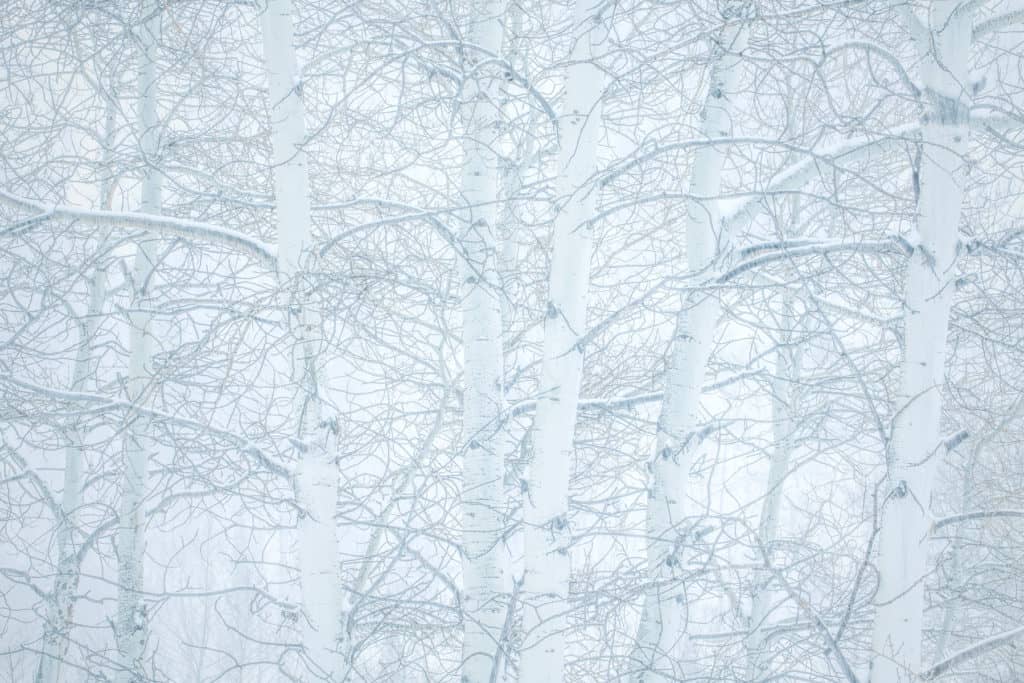
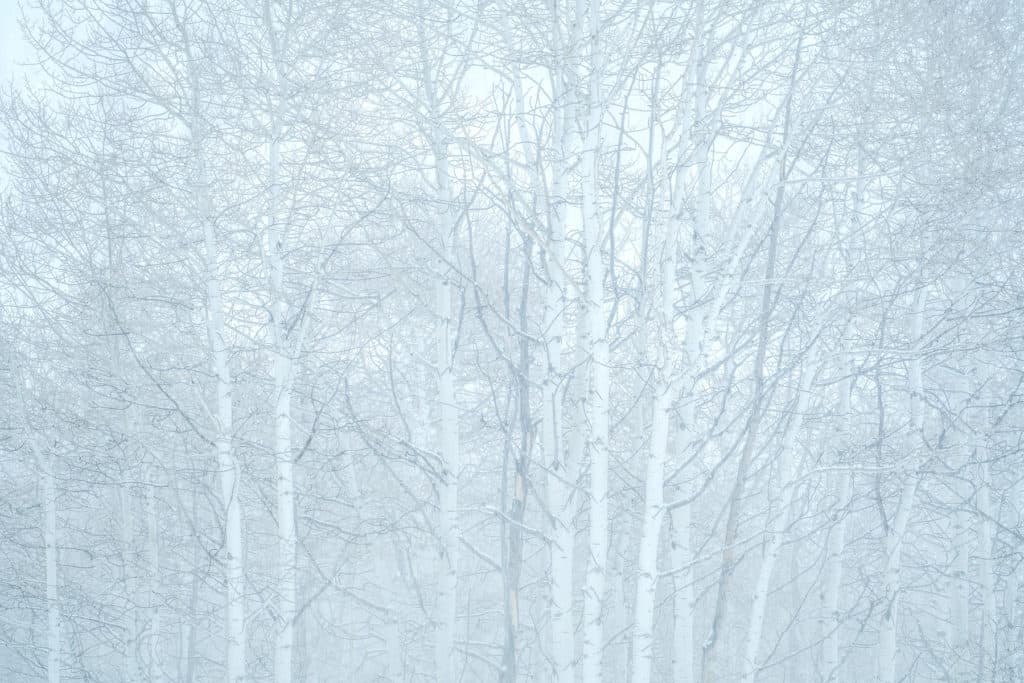
A lesson I hope to pass on from the experiences I have had in this small grove is the value of familiarity when it comes to photographing nature. With these trees so close to home, and being able to visit them so many times, I knew my way around and could wander through them confidently, able to anticipate how the light would hit certain groups of trees before it would happen. Since they were easy to access, I felt no pressure to make great images of them either, and this allowed my creativity to flow freely without being hindered by stress or anxiety to try and ‘get shots.’ (See The Perils of Pressure) Since it is also a nondescript location that I had never seen photographs of before, my mind wasn’t clouded by other people’s ideas. I was working with a blank slate. Not having preconceived judgments about a place can allow you to see it in all sorts of interesting ways, even if it requires dozens of visits for it to happen.
Just forcing yourself to revisit a location over and over again does not create this kind of deep relationship that will yield more images; it only comes from revisiting places that you are genuinely drawn to. Maybe you don’t allow yourself to return to the places that call you because you feel obligated to go elsewhere in order to be more productive since you have already “done everything.” Do not ignore the places and things that excite you as a photographer. As Ansel Adams said, “If what I see in my mind excites me, there is a good chance it will make a good photograph.” On the other hand, if you photograph things that do not excite you, then no excitement will come through in your images.
I am looking forward to conversing with these trees again in another couple of weeks now that the leaves are just beginning to change around here. In the end, what makes this grove so special to me is not the amount of images it yielded in a single season. Rather, it’s that each image represents a new way of seeing my same surroundings. I photograph nature because I love nature, not photography. But practicing photography while in nature has caused me to look into it more deeply–carefully observing and noticing its nuances and subtle details that most people overlook. Every one of these photographs represents something unique that I saw in these trees each time I visited them, unraveling more of their character and personality, strengthening our bond, and making our relationship more meaningful.

